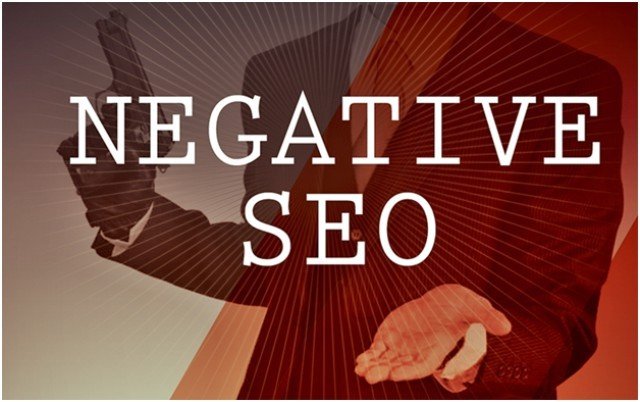For every online business, getting its product/service website ranked high in search engine results pages is very important. It is, in many ways, the key to getting a higher website traffic turnover. Which, of course, translates into greater sales; and hence more revenue. But the internet is not a ‘safe’ or fair advertising medium for honest brand marketers. It is the playing field of clever Blackhat SEO techs (and their other digital marketing ilk). Specialists who make a career out of damaging the online reputations of their competitor websites. And in doing so, causing their Google rankings to fall. Recently, I read an article on negative SEO tactics through my Cox Internet Deals, and I couldn’t quite put my head around the scale of the problem. Which has turned into a virtual cancer of sorts, if I were to be a little graphic about it!

In this blog post, I’ll detail some of the ways in which you (as a webmaster) can protect your sites from the plague of negative SEO assaults. As a result, you’ll be sufficiently equipped to retain your search engine rankings. At least to the level attained through honest ‘Whitehat’ ranking work; that is.
What is Negative SEO all about?
In a nutshell, this concept sums up the series of tactics used by wily SEO techs to bring down their competitors’ ranking profiles. Ascribing bad sites links (from disreputable websites; including those that deal in pornographic content and other illicit activities) is probably their most favorite strategy.
So any SEO counter-protection plan has to include removing them. And ideally, as soon as they make their appearance. This requires the attribute of constant vigilance, as well as reliance on utilities like Google’s Disavow Links Tool (available from the Google Webmasters platform) or Linkquidator. Both of these services can be freely attained online. But time constraints restrict their use.
This is because Blackhat techs have software weaponry of their own, which can ascribe up to a million bad site links to a target website within a day’s timeframe. And so removing all of these links can become a great hassle. Because they need to be differentiated from quality incoming links (which have a very strong bearing on your SERP rankings). And also because, in many cases, manual checking is the only way to go.
Protecting Your Sites from Attack
In order to do this, you need to follow a step-by-step approach; which should obviously start with conducting a complete (and ongoing) audit of your site backlinks. If you work in a digital marketing firm, it would be a wise idea to devote a specific number of people for keeping stock of these attachments. So that they’re removed quickly.
Migrate to HTTPS
A second important step for ensuring overall website protection is to migrate to the HTTPS certification protocol. This safeguards the website experience from interference by hackers and other malicious actors; some of whom may be commissioned by your competitors (you never know!). Browsers like Google Chrome and Microsoft Edge also prefer to load HTTPS websites over simple HTTP ones.
Avoid Plagiarism like the Plague
A third, but no less important, tactic to give search engines solid ‘website quality & credibility’ signals is to ensure that website content is not plagiarized. This applies even if your content is original (penned first by you). Examples of websites with copied content ranking higher than their original sources are many. In such cases, it is always a good idea to file a complaint report to Google (or whichever search engine you use). This effectively takes care of the scam artists who indulge in these practices.
Stay Weary of Keyword Stuffing
Lastly, it is crucial for webmasters and content writers to protect their written work from keyword stuffing. In the past (before 2008, that is), Google ranked websites into thematic categories based on its identification of these terms in content samplings. But pretty soon, website developers started to exploit this provision (or loophole) without pause. A situation which led the search engine to roll out an update. Now, if a certain word or phrase is unnaturally (inorganically) placed everywhere in the content, the website stands a good chance of getting penalized.
By ensuring a keyword density of, say 1 (keyword):100 (normal words), you can avoid this pitfall.
Write for Human Beings
For content writers, it is essential to write for human beings first & foremost. Because as an inspired search marketer once said (I won’t reveal the name), ‘bots don’t pay’! It is people who are going to come to your site and sign up for your company’s services. So when you’re producing website content (both the written and graphical parts), you need to put yourself in the visitors’ shoes. This helps you to focus on such parameters as content quality and readability.
A few years ago, I conversed with a COX Bundle Deals sales rep. And he told me how his company had completely relegated SEO website concerns to the background. This policy allowed writers to produce content with freedom, and thereby deliver effective website copy.




Hi Stephen,
You did great with your tips on how to protect from negative SEO. But some may wonder, “is negative SEO real?” Certainly, it is. And that’s why site owners need to protect their sites. In fact, it is a lot easier to protect your blog or website from negative SEO than to fix the problem caused by negative SEO. So I will so, thank you, your article is timely and your tips are remarkable.
However, I want to add this one tip which seems to be the first step to protecting your site.
Set up email alerts with Google Webmaster Tools. That way, Google will send you email alerts when our blog or website is attacked or when there is or are any other site problems like connectivity issues and non-indexed pages.
Disavow Links Tool is a great tool by google webmasters
And i would say that the best thing is to creat content for humans and not for search engines. This is what google says everytime